____________
1.
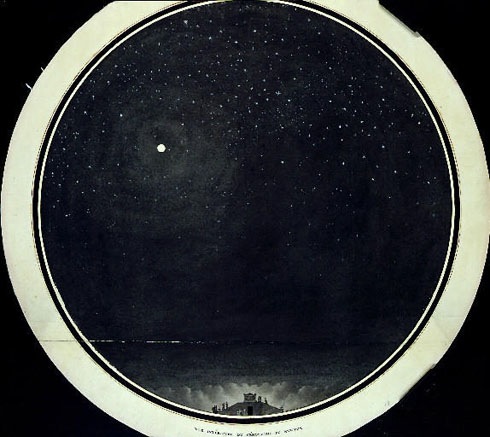
‘One night in the mid-1790s the architect Etienne-Louis Boullée took a walk in the forest at full moon. Suddenly he noticed his own shadow moving among those of the trees. ‘What did I see?’ he wrote in his memoirs. ‘A mass of objects detached in black against a light of extreme pallor. Nature seemed to offer itself, in mourning, to my sight.’ Boullée began to imagine an architecture of naked walls, ‘stripped of every ornament … light-absorbing material should create a dark architecture of shadows, outlined by even darker shadows’.
‘A taste for the monumental unadorned tombs of the Pharaohs may have been prevalent at the time but it was probably no coincidence that Boullée dreamed up his Temple of Death (c. 1795) shortly after Robespierre’s Terror had forced him to withdraw from Parisian public life. His earlier design for a Monument to Sir Isaac Newton (c. 1785) is like a giant, unadorned white balloon, about to rise skyward. The Temple of Death, in total contrast, is sunk into the ground. It looks like a photographic negative, and its ornamentation is a mere punched-out absence – a series of black, square window openings. What was new about Boullée’s design was that instead of being based on living nature it was based on nature’s fleeting, distorted image: its shadow. What Boullée imagined was a monolithic plainness, dark surfaces swaying between flatness and endless depth. More than just romantic horror vacui, this was a premonition of the plain, smooth surfaces that would embody the rationalization of space in the dawning Industrial Age.
‘In the Modern Age it is usually the kaleidoscopic, shiny surfaces of the objects surrounding us that are most eloquent about our desires and fears. The indifferently plain, matt, monochrome, silent surfaces ubiquitous in modern society – industrial finishes in black, grey and anthracite; polished steel, sheets of plaster, pressed wood, plastic and aluminium; walls, streets, machines – are silently taken for granted as being neutral amid the glittering turmoil. Ever since Boullée, however, the reality has been that plain surfaces are not simply neutral objects in social space, but the very materialization of that space.’ — Jorg Heiser, Frieze
____________
2.
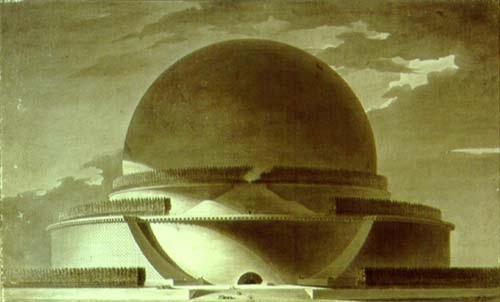

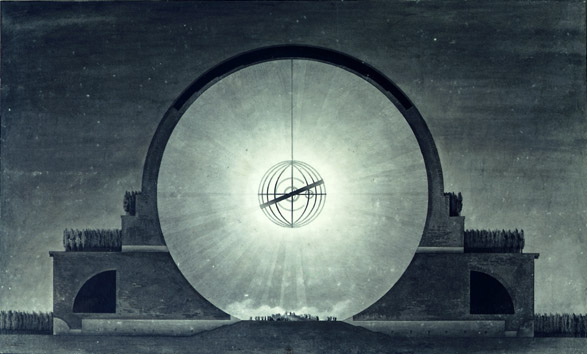
‘Boullée promoted the idea of making architecture expressive of its purpose, a doctrine that his detractors termed architecture parlante (“talking architecture”), which was an essential element in Beaux-Arts architectural training in the later 19th century. His style was most notably exemplified in his ‘Project for a Cenotaph for Isaac Newton’, which would have taken the form of a sphere 150 m (500 ft) high embedded in a circular base topped with cypress trees. Though the structure was never built, its design was engraved and circulated widely in professional circles.
‘Newton’s cenotaph was designed to isolate, to reinvent, the huge movement of time and celestial phenomena. Inside, the viewer is isolated too, on a small viewing platform. Along the top half of the sphere’s edges, apertures in the stone allow light in, in pins, creating starlight when there is daylight. During the night a huge and otherworldly light hangs, flooding the sphere, as sunlight. During the day, the “night effect.” During the night, day.’ — The Ingoing
____________
3.

‘Boullée’s ‘Monument intended for tributes due to the Supreme Being’ is an expression of the metaphorical, emotional, and symbolic aspects of the architecture’s purpose. Function, shape, setting, lighting, and even scent were all considered in an effort to realize the unique character of the monument within a defined aesthetic environment. Boullée believed that a building’s “character” should be poetic and evoke an appropriate feeling in those who experienced it. For example, the strong use of symmetry in his drawing – not only in the buildings, but in the pyramid-shaped mountain as well – is intended as an image of clarity, order, and perfection. The monument thus becomes a metaphor for the divine nature of the Supreme Being. In a passage of his treatise Boullée also describes the setting for this monument:
… the whole would be decorated with all that is most beautiful in nature; the buildings would be mere accessories, the base of the repository formed by a superb open-sided Temple crowning the mountain top. The Temple precincts would consist of fields of flowers exuding their sweet smell like incense offered to the Divine Being… This beautiful place would be the image of all that ensures our well-being; it would fill our hearts with a sense of joy and would be for us a true earthly Paradise.’ — James Wehn, My Art Canon

____________
4.
____________
5.
‘Boullée’s ideas had a major influence on his contemporaries, not least because of his role in teaching other important architects such as Jean Chalgrin, Alexandre Brongniart, and Jean-Nicolas-Louis Durand. Some of his work only saw the light of day in the 20th century; his book Architecture, essai sur l’art (“Essay on the Art of Architecture), arguing for an emotionally committed Neoclassicism, was only published in 1953. The volume contained his work from 1778 to 1788, which mostly comprised designs for public buildings on a wholly impractical grand scale.
‘Boullée’s fondness for grandiose designs has caused him to be characterized as both a megalomaniac and a visionary. His focus on polarity (offsetting opposite design elements) and the use of light and shadow was highly innovative, and continues to influence architects to this day. He was “rediscovered” in the 20th century.’ — Helen Rosenau




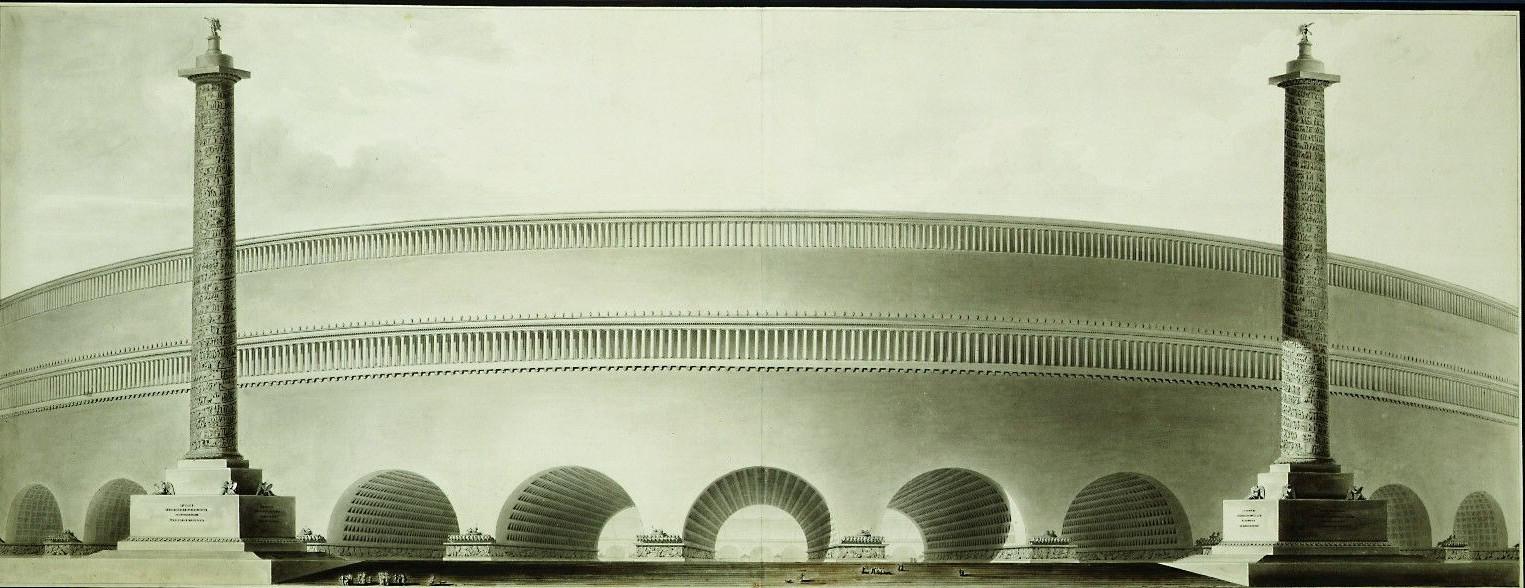
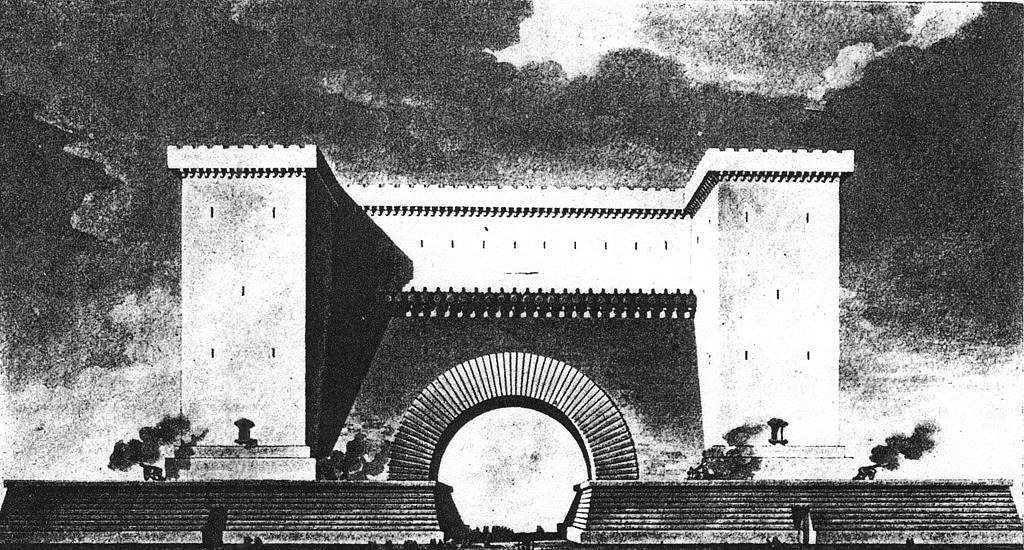
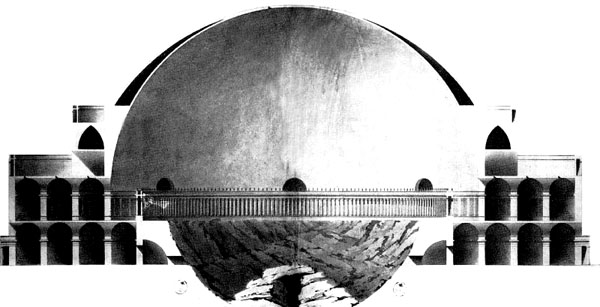




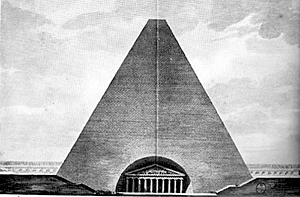
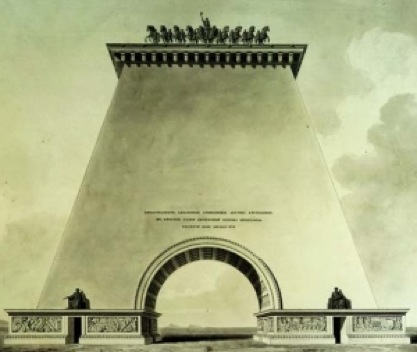




_____________
6.
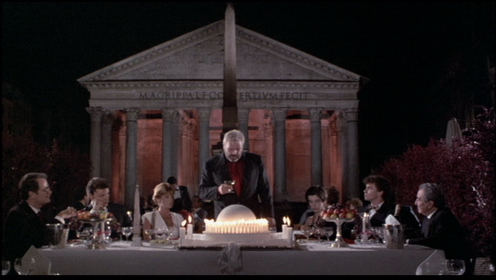
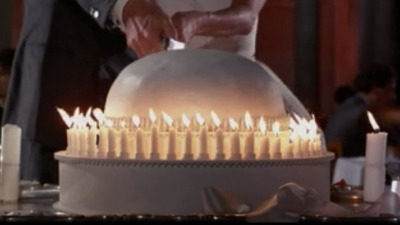
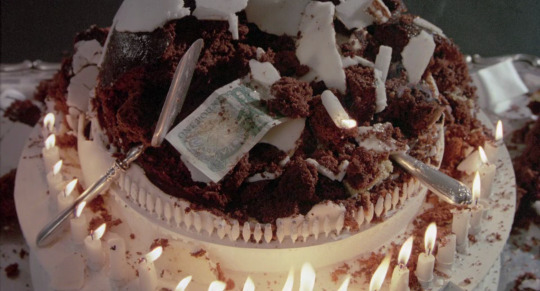
‘In Peter Greenaway’s 1987 film The Belly of an Architect, the main character Stourley Krackite is not only obsessed with celebrating an architect (Etienne-Louis Boullee) who never finished a building, but he is also consumed with representations of the body part whose rebellion will lead to his eventual demise: his belly. Kracklite photocopies the stomachs of representations of architectural greats (the emperor Hadrian, Boullee) and draws his ailments in order to illustrate his pain for his doctors. Kracklite’s fascination with Boullee seems appropriate in that it mirrors his own creative impotence; in the scene in which Kracklite catches Caspasian in the act with his wife, one cannot tell if he is enraged because his conjugal property is being stolen, or because Caspasian is using his model of a Boullee lighthouse as an enlarged surrogate phallus.
‘The fact that his two image obsessions somewhat mirror each other in form (as the repeated form in Boullee’s sketches is a dome quite reminiscent of Kracklite’s bloated belly) marries his creative life and impending death and solidifies the reality that it is likely Kracklite will go the way of Boullee and die without many major constructions to carry his image forward into the future.’ — Caitlin Mae Verite
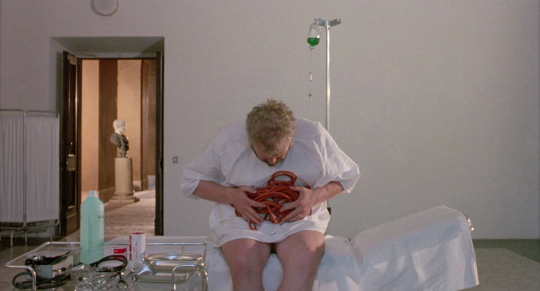
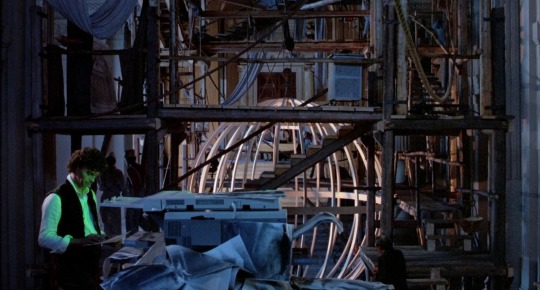
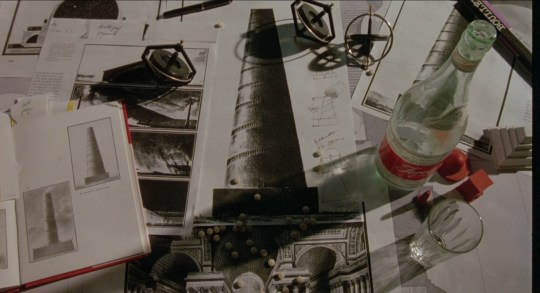

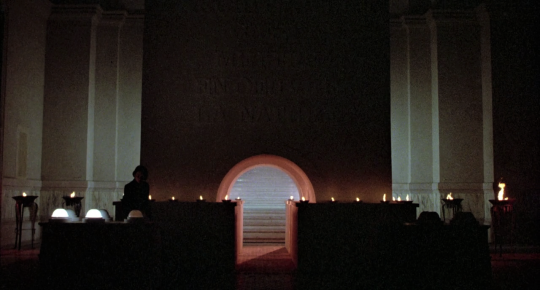
_____________
7.
Video made by Luca Cosmi and Francesco Dall’O ‘as part of the seminar “communicating architecture and design” 2014
3D modeling process of the Newton’s Cenotaph by Étienne-Louis Boullée using Sketchup.
This Building designed by the architect (Étienne-Louis Boullée) as a proposal for a cenotaph for the English scientist Isaac Newton. The building itself was a 150m (500ft) tall sphere encompassed by two large barriers circled by hundreds of cypress trees. Though the structure was never built, its design was engraved and circulated widely in professional circles. This is my final project done in the workshop (Unbuilt Realities) conducted by Karim Mousa from MIR Studio.
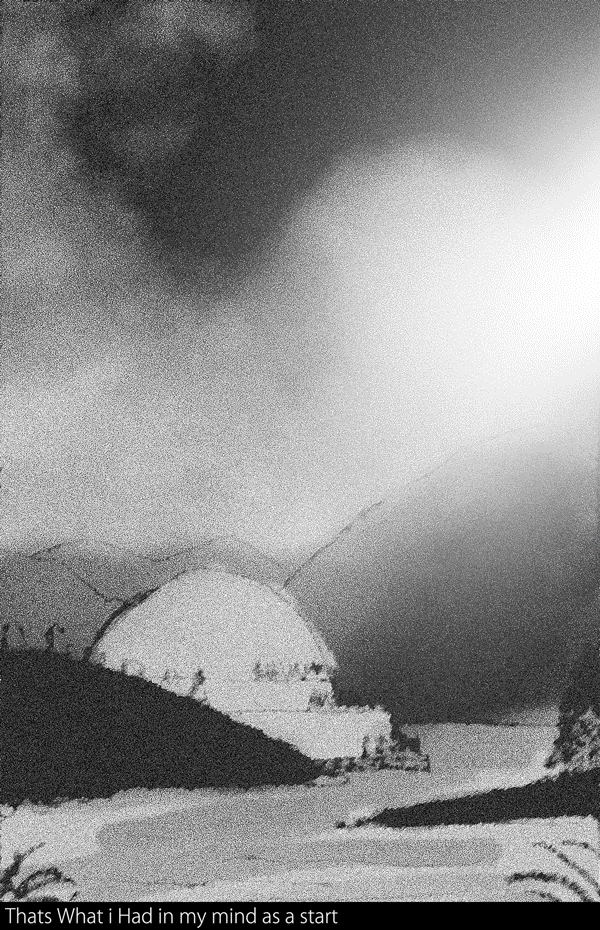
Lux in Tenebris is a speculative exploration of the work of Boullée, extrapolated from faded etchings into a fully digital imagined reality.
___________
8.
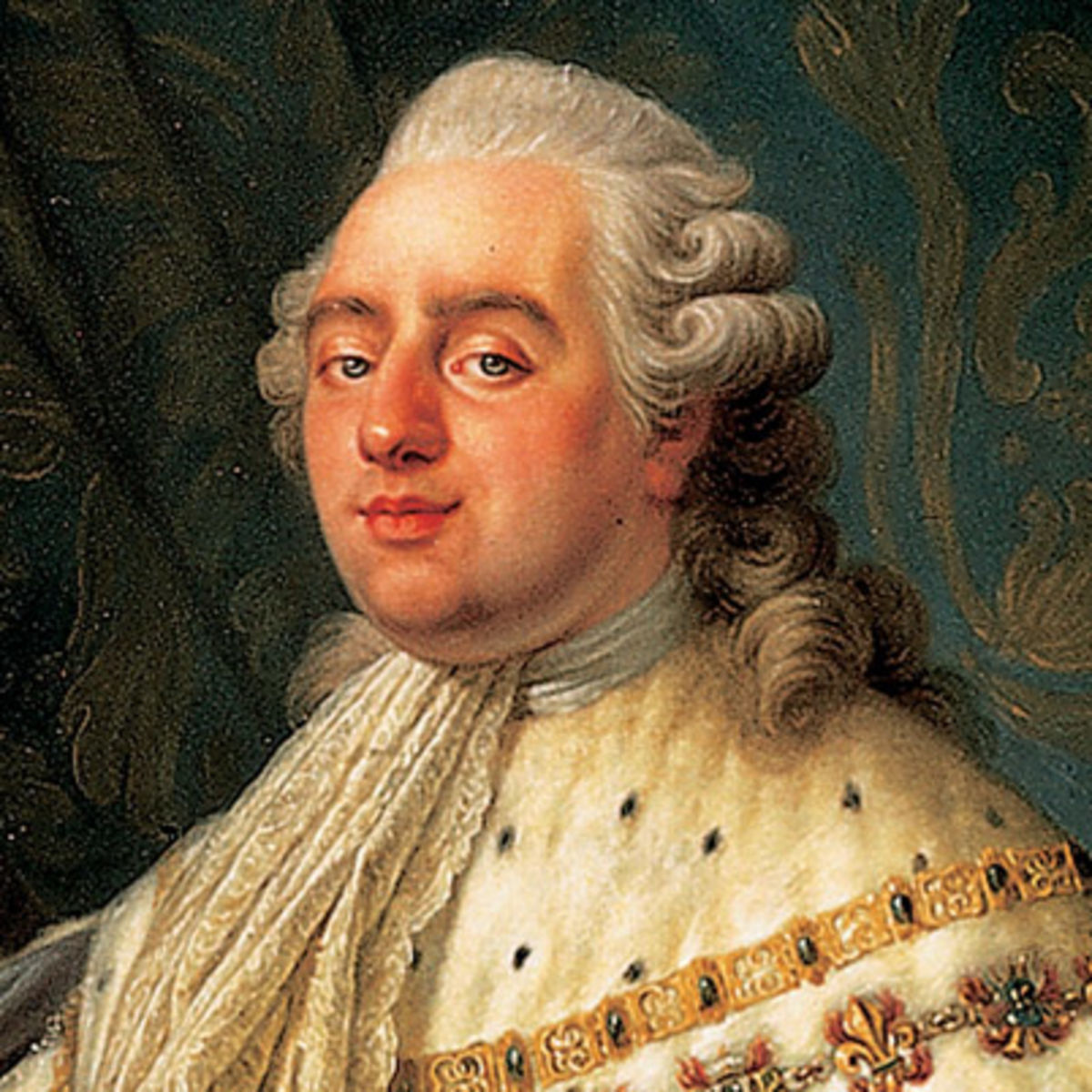
‘Étienne-Louis Boullée, (born February 12, 1728, Paris, France—died February 6, 1799, Paris), French visionary architect, theorist, and teacher.
‘Boullée wanted originally to be a painter, but, following the wishes of his father, he turned to architecture. He studied with J.-F. Blondel and Germain Boffrand and with J.-L. Legeay and had opened his own studio by the age of 19. He designed several Parisian city mansions in the 1760s and ’70s, notably the Hôtel de Brunoy (1774–79). Despite the innovative Neoclassicism of his executed works, Boullée achieved a truly lasting influence as a teacher and theorist.
‘Boullée’s emphasis on the psychology of the viewer is a principal theme of his Architecture, essai sur l’art, not published until the 20th century. He has been criticized as a megalomaniac, because of his tendency toward grandiose proposals, but these should be regarded simply as visionary schemes rather than as practical projects. In his desire to create a unique, original architecture appropriate to an ideal new social order, Boullée anticipated similar concerns in 20th-century architecture.’ — Encyclopedia Britannica
*
p.s. Hey. ** David Ehrenstein, Wait, you’re going to have your own podcast? What a fantastic idea! Whoa. Really looking forward to that, need I even say. ** Dominik, Hi!!! It’s always so strange to remember something I did as an adult, say read with Paul Monette, and realise the person I’m talking with was just a little kid at the time, but I have a kind of blind spot about age difference with people I know, I guess because I feel like I’ve always been basically the same person whatever age I’ve been? I don’t know if that’s good or bad or maybe neither. Yes, I think Placebo is especially huge in France. Certainly compared to their popularity in the US. It’s interesting. How in the world does Stephen King write so many books? It’s boggling. He must get good ideas at a rapid fire pace, and I guess his prose isn’t something he hugely labors over, or not based on the few books of his that I’ve read. Given I’m a prose writing inch worm, my love happily accepts the Tina-like help your love offers. Love offering a very solid form of love akin to the scat escort I found yesterday who asserts that he takes anti-diarrheal drugs and eats lots of dark chocolate so his shit will stick to his clients’ teeth, G. ** _Black_Acrylic, Happy you were intrigued, Ben. Right, those images of that flat complex were renderings. What does ‘state of the art cinema’ mean, I wonder? Well, I suppose it’s obvious, never mind. I hope it’s utopian too and has an IMAX theater that shows nothing but experimental films. Fat chance, or, rather, obsese chance. ** Steve Erickson, Thanks for the download link. Well, slightly better is better than not, I guess, but, yeah, time for improvement rapidly, I hope. Everyone, Here’s Mr. Erickson: ‘For Gay City News, I reviewed David France’s COVID documentary HOW TO SURVIVE A PANDEMIC’ here. ** Okay. Today my blog post chooses to concentrate on Etienne-Louis Boullée’s visionary and almost always unrealizeable architectural notions, and I hope you enjoy it. See you tomorrow.




 Now available in North America
Now available in North America 
Hello from wet and dismal Manchester! I know of a Japanese theorist/artist who was proposing cenotaphs/monuments to death/mass crypts for urban populations at the start of the 20th century, and I remember seeing some super cool drawings of his, but I will have to dig a little deeper because google is not giving his name to me. Do you know if any of the buildings Boullée actually had built are still standing in Paris/worth seeing? Have an immense time at the Puce Mary show tonight! And otherwise, wishing you a Wednesday that makes any rain flavoured to your tastes, and is moreover so delicious that it makes everyone run outside to lick it up from the street. xT
Dennis, Okay, so hairs cut. Both of us, it seems. Now, let’s get some motherfucking spring weather going on and show off our new ‘dos.
Thanks. That’s the plan. This novel is a picaresque and maybe that’s a cheap way to throw the kitchen sink at it but it was all pretty meticulously planned.
And man, Mieze sneaking in here, hahaha! I just talked to her Sunday. Good to see that name on the blog once again.
Got so slammed and swamped at work yesterday. Eek. But that’s how this job goes. Oof.
The Belly of AnArchitect is one of Greenaway’ best films.
I am aIt the moment in severe fiancial straits and would appreciate a cotirbutionto my GoFundMe page
https://www.gofundme.com/f/fundraising-for-our-friend-david-ehrenstein?member=15151553&utm_campaign=p_cp+share-sheet&utm_medium=copy_link_all&utm_source=customer
Hi!!
I think it’s definitely good – that you’ve always felt like the same person, regardless of your age. Or at least I’m kind of the same, and I like it this way. Also, I talk to people online more often than in real life, which makes our potential age difference even more invisible and irrelevant, I guess. Going back to Paul Monette for just one more second: did you know his partner he’d written “Borrowed Time” about as well? Roger?
I have this theory that Stephen King has helpers like Santa Claus who write half of his books, haha. I think most of his novels are pretty engaging and enjoyable, but I wouldn’t say they’re good in a strictly literary sense. He’s a great storyteller. But still. The number of books he publishes yearly is absurd, haha.
Hahaha, fuck, it’s VERY hard to compete with your love! Such an attentive and devoted partner! Thank you! Love who does not feel like having the same round of small talk with the same people every day when walking his dog, Od.
Boullée seems like a very cool guy. These visionary genius types often are.
We’ve got snow coming down here in Leeds. Crazy times!
This day is incredible. Fuck. How do you do it man? I’m book marking this because it is astonishing and I want to work out what i feel about it.